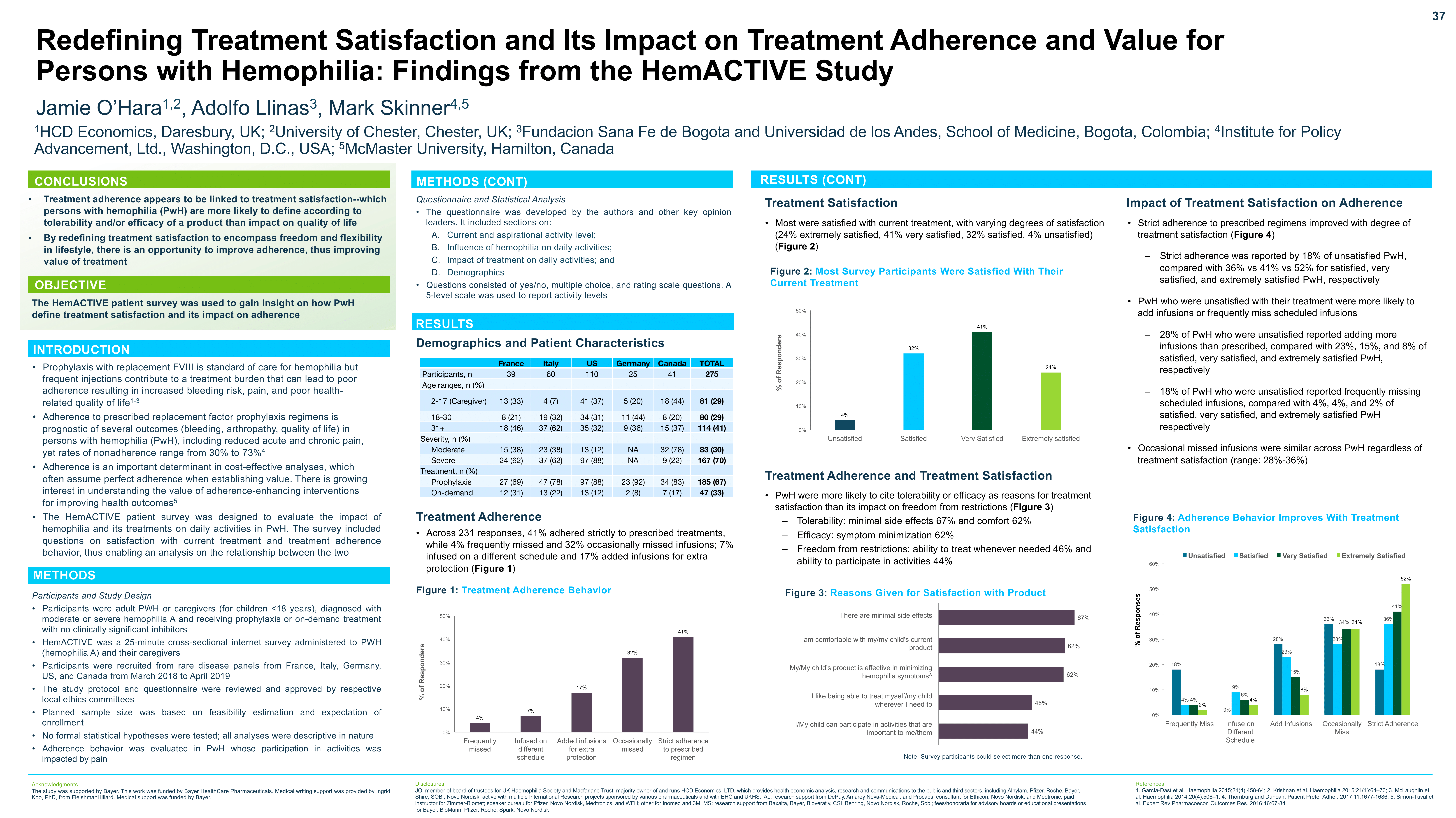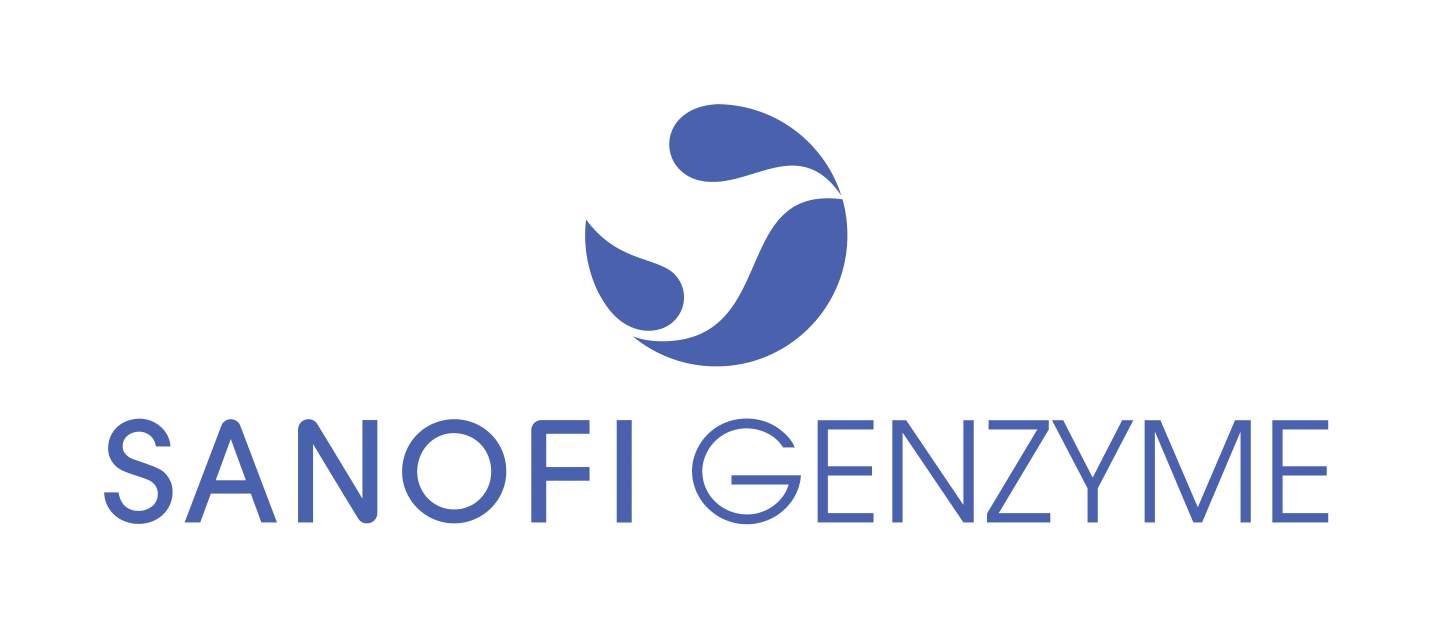National Hemophilia Foundation (NHF) - Posters
Redefining Treatment Satisfaction and Its Impact on Treatment Adherence and Value for Persons with Hemophilia: Findings from the HemACTIVE Study |
|
|
|

|
Objectives:
Adherence is an important determinant for analyses of a therapys cost-effectiveness, which often establishes value based on complete adherence. For persons with hemophilia (PwH), poor adherence to prescribed regimens of prophylactic replacement factor can limit its effectiveness, and in turn, compromises joints and restricts physical activity. The HemACTIVE study was a patient survey on the impact of hemophilia and its treatment on daily activities in PwH. Findings from the study have provided insight on how PwH define treatment satisfaction and its impact on adherence.
Methods:
Persons with moderate or severe hemophilia A, aged 265 years (caregivers for PwH <18 years) from France, Italy, Germany, Canada, and US, were given a 25-minute, IRB-approved, web-based questionnaire including questions on treatment satisfaction and adherence behavior. Reasons for treatment satisfaction were not assessed in Germany.
Summary:
275 PwH were enrolled (39 France, 60 Italy, 25 Germany, 41 Canada, 110 US; 29% were children/caregivers; 61% had severe hemophilia). Most participants were satisfied with current treatment, but at varying degrees (24% extremely satisfied, 41% very satisfied, 32% satisfied, 4% unsatisfied). On reasons for treatment satisfaction, PwH were more likely to cite tolerability (minimal side effects: 67%; comfort: 62%) and/or efficacy (symptom minimization: 62%) than impact of a treatment on freedom from restrictions (ability to treat whenever needed: 46%; ability to participate in activities: 44%). Strict adherence to prescribed regimens increased with degree of treatment satisfaction: 18% vs 36% vs 41% vs 52% for unsatisfied, satisfied, very satisfied, and extremely satisfied, respectively. PwH who expressed being unsatisfied with their treatment were more likely to add infusions (27% vs 23% vs 15% vs 8%) or frequently miss scheduled infusions (18% vs. 4% vs 4% vs 2%). The proportion of patients who occasionally missed infusions was similar across PwH regardless of treatment satisfaction (range: 28%-36%).
Conclusions:
Treatment adherence appears to be influenced by treatment satisfaction, which is defined more according to tolerability and/or efficacy of a product than by its impact on quality of life. Redefining treatment satisfaction to encompass freedom and flexibility in lifestyle may allow the prospect of increasing adherence, thus improving value of treatment.



